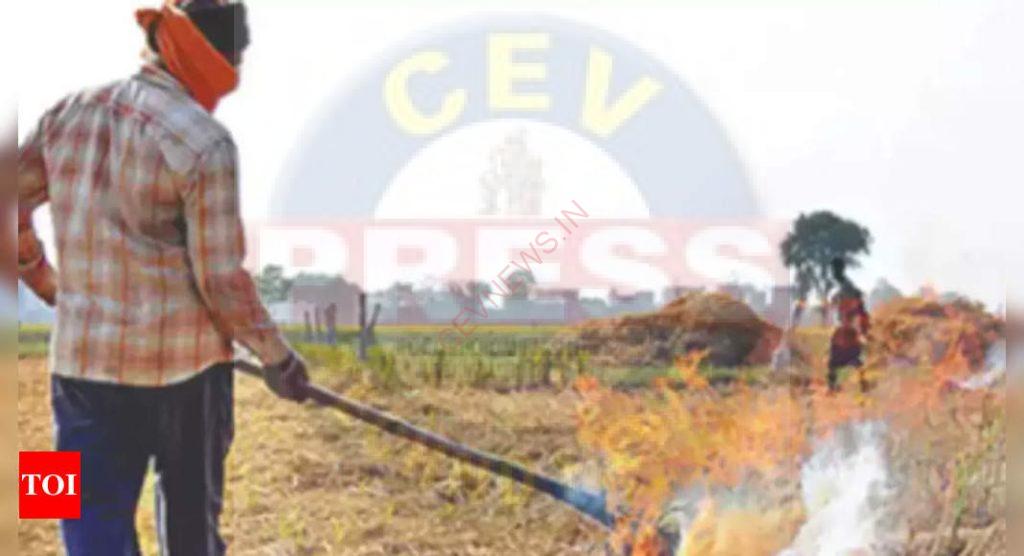NEW DELHI: Days after the Centre sought to fix accountability of district collectors for their failure to deal with the problem of stubble burning, the Commission for Air Quality Management (CAQM) on Friday held a meeting with the chief secretary and deputy commissioners of 22 districts of Punjab which reported a sudden spike in stubble burning cases in the last few days and is learnt to have set a timeline for them to take required actions on the ground.
Though the absence of implementation of an action plan on the ground can be attributed to such a huge cumulative number, officials in the agriculture ministry said the sudden spike in the last few days was due to massive paddy harvest operations simultaneously in all those 10 districts. “Late sowing of paddy in these districts due to delayed monsoon rain this year left a very small window for farmers to prepare their farms for the next crop (Rabi) after harvest. Paddy harvest in these districts was done a bit early due to early sowing last year,” said an official.
Meteorological reasons will, however, not absolve the state and concerned district collectors for their inaction on the ground. Records speak a volume about their apathy. Data from the agriculture ministry shows that the concerned state governments – Punjab, Haryana, UP and Delhi – have been provided more than Rs 3,000 crore for stubble management by the Centre since 2018-19. Punjab alone was allocated the maximum fund of about Rs 14, 500 crores, while Haryana got Rs 900 crores, UP got Rs 713 crores and Delhi got Rs 6 crore rupees. Out of this, about Rs 1,000 crore is left with the states unspent. Punjab alone has Rs 491 crore unspent money.
Similarly, the ministry had set a target to bring more than 10 lakh acres (8.15 lakh hectares) of land in the states under the ambit of Pusa bio-decomposer this year. Though Haryana, UP and Delhi have used the technology adequately as per their respective targets, Punjab used it on merely 5,000 acres of land and thus derailed the entire plan of managing stubble in the state.
Though the absence of implementation of an action plan on the ground can be attributed to such a huge cumulative number, officials in the agriculture ministry said the sudden spike in the last few days was due to massive paddy harvest operations simultaneously in all those 10 districts. “Late sowing of paddy in these districts due to delayed monsoon rain this year left a very small window for farmers to prepare their farms for the next crop (Rabi) after harvest. Paddy harvest in these districts was done a bit early due to early sowing last year,” said an official.
Meteorological reasons will, however, not absolve the state and concerned district collectors for their inaction on the ground. Records speak a volume about their apathy. Data from the agriculture ministry shows that the concerned state governments – Punjab, Haryana, UP and Delhi – have been provided more than Rs 3,000 crore for stubble management by the Centre since 2018-19. Punjab alone was allocated the maximum fund of about Rs 14, 500 crores, while Haryana got Rs 900 crores, UP got Rs 713 crores and Delhi got Rs 6 crore rupees. Out of this, about Rs 1,000 crore is left with the states unspent. Punjab alone has Rs 491 crore unspent money.
Similarly, the ministry had set a target to bring more than 10 lakh acres (8.15 lakh hectares) of land in the states under the ambit of Pusa bio-decomposer this year. Though Haryana, UP and Delhi have used the technology adequately as per their respective targets, Punjab used it on merely 5,000 acres of land and thus derailed the entire plan of managing stubble in the state.

